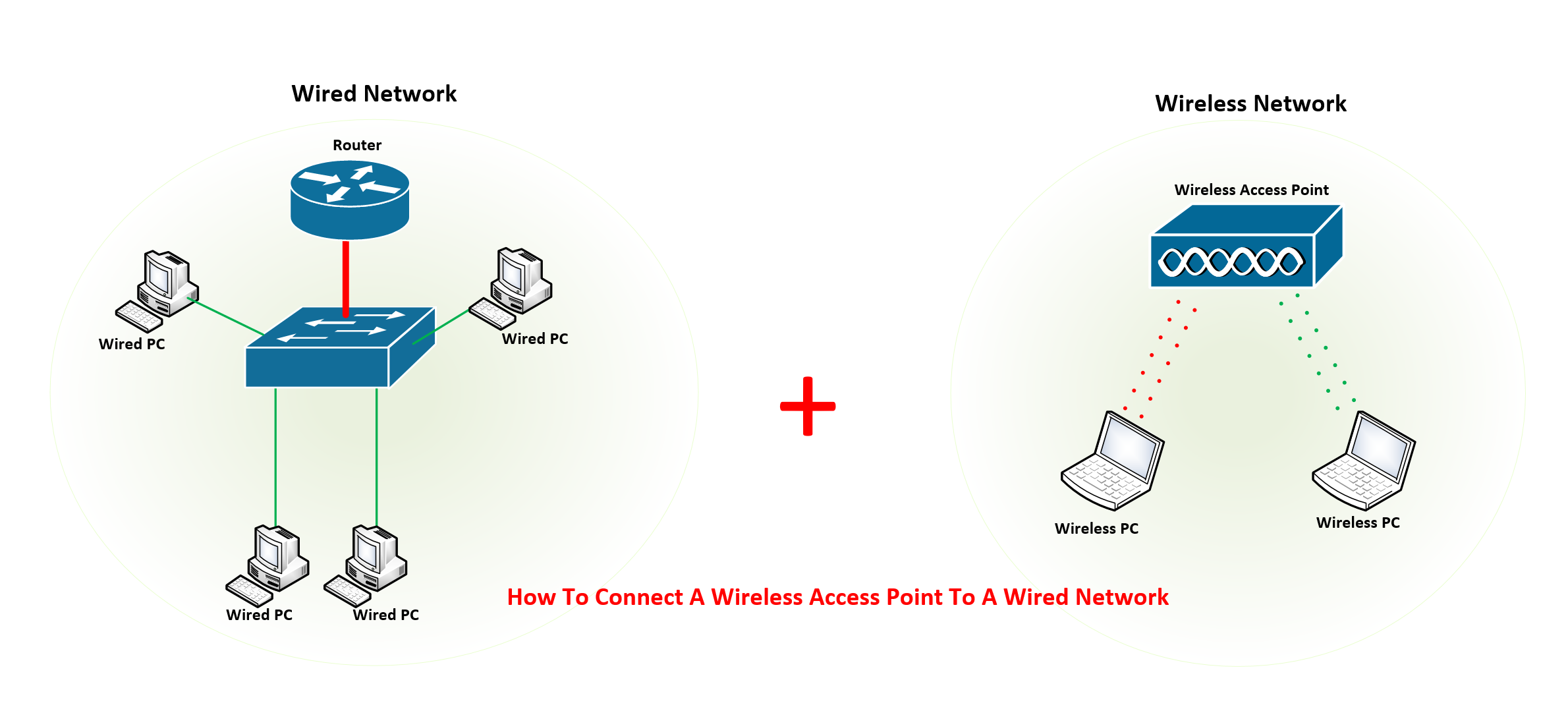Do you really know how to connect a wireless access point to a wired network? Before we delve into the configuration for how to connect a wireless access point to a wired network, let us take a brief moment to break things down in a simplistic manner to make the quest achievable each time.
What is a Wireless Access Point?
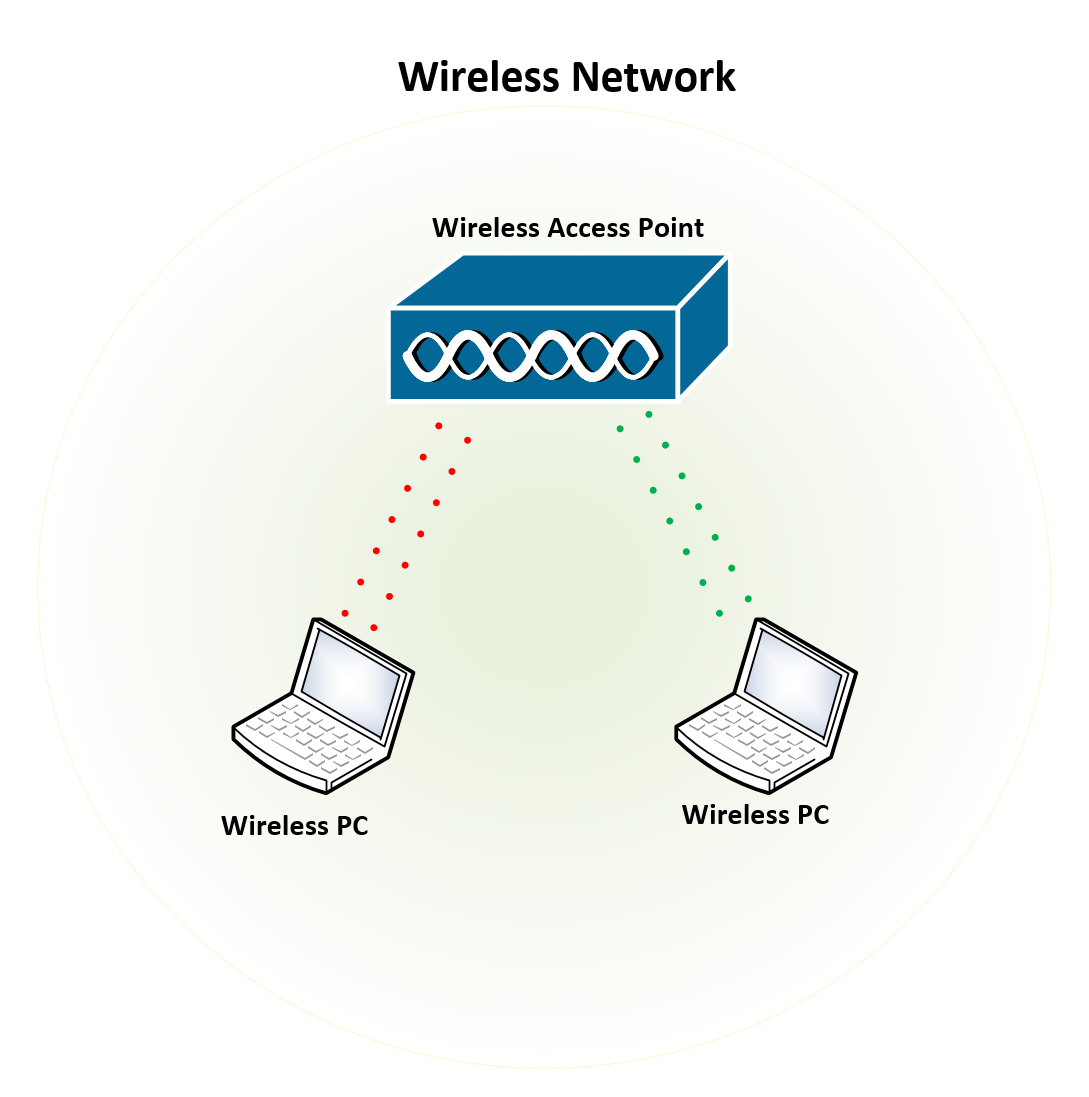
The Wireless Access Point (WAP) is a networking devices that enables the capability for wireless-capable devices to connect to a wired network. Introducing a WAP to your existing wired network is instrumental to accommodating those devices only capable of wireless connection. I have not come across a smartphone with an RJ45 port yet and so it is only appropriate that I consider the connectivity capability of the end user device. It is like creating or deploying another network purely for wireless devices but still an essential part of your existing wired network such as the diagram displayed below in this wireless access point setup diagram.
Wireless devices (also known as access points) provide a secure, affordable, and easy-to-use wireless LAN solution that combines mobility and flexibility with the enterprise-class features required by networking professionals. When configured as an access point, the wireless device serves as the connection point between wireless and wired networks or as the center point of a stand-alone wireless network. In large installations, wireless users within radio range of an access point can roam throughout a facility while maintaining seamless, uninterrupted access to the network.
Figure 1.0 – How to Connect a Wireless Access Point to a Wired Network
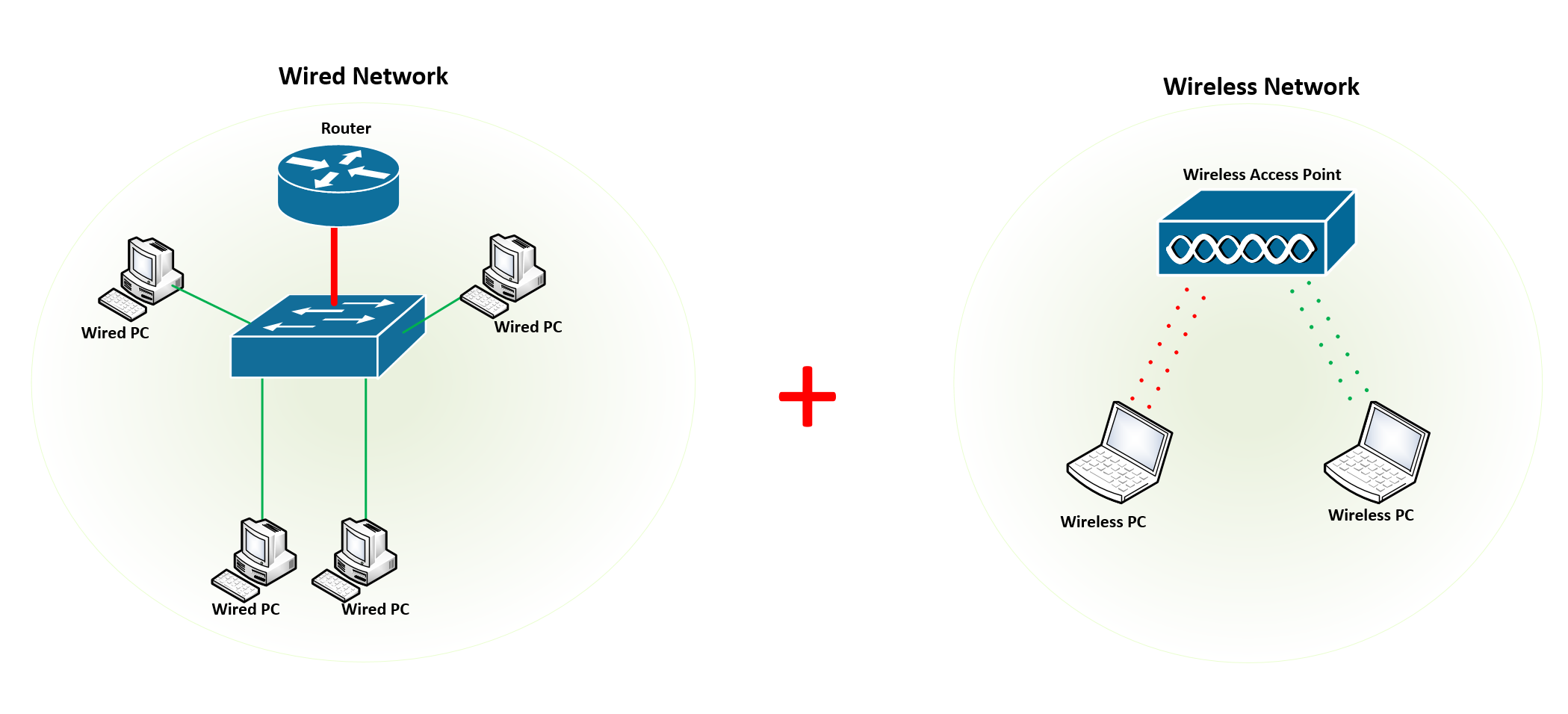
In the network diagram displayed above Figure 1.0 – How to Connect a Wireless Access Point to a Wired Network, you can see clearly two portions of networks. One being a wired network and the other being a wireless network. The wired network consists of four wired computers to a switch, which is connected to a router. The wireless network in the right portion shows two wireless computers connected to a wireless access point (WAP).
Since the objective of this post is to show you how to connect a wireless access point to a wired network, I will be explaining the deployment scenario and the technical way to configuring your wireless access point to connect to your existing wired network.
So what is a wired network?
Figure 1.1 – What is a Wired Network?
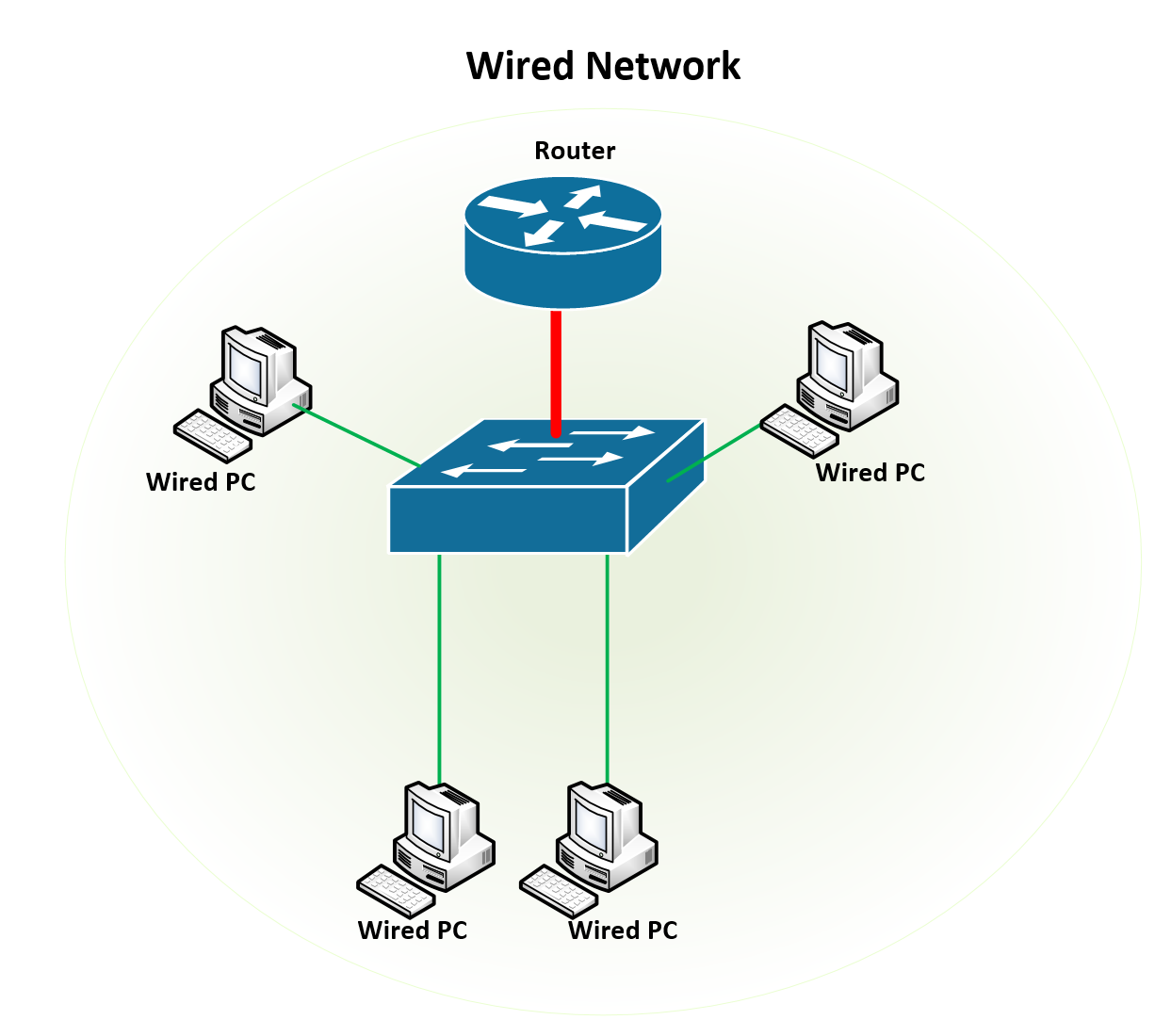
The wired network is a common type of wired configuration in that the majority of wired networks makes use of Ethernet cables to transfer data between connected PCs or end devices.
In a small office or business wired network, a single router may be tasked to connecting all the computers or end devices. Larger networks often incorporate multiple routers or switches tasked with interconnecting network segments or devices. It is a popular practice to use one of these devices typically to connect to a cable modem, T1 line, or other types of Internet connection to provide Internet access to all devices connected to the network.
These devices would normally be capable or equipped to perform Network Address Translation to allow all those devices to get to the internet. For more in-depth information, read my post Design and Build a Two-Tier Campus Network Architecture .
Wired may also refer to peripheral devices like wired keyboards and mice. The word “wired” is often used to describe input devices that connect to a USB port. Peripherals such as monitors and external hard drives also use cables, but they are scarcely called wired devices since wireless options are not generally available.
What is a Lightweight Access Point (LAP)?
A Lightweight Access Point is an AP that is designed to be connected to a wireless LAN (WLAN) controller (WLC). The Lightweight Access Point provides dual band support for the IEEE (pronounced eye triple eee) 802.11a, 802.11b, and 802.11g standards and provides simultaneous air monitoring for dynamic, real-time radio frequency (RF) management. Additionally, LAPs also handle time-sensitive functions such as Layer 2 encryption enabling WLANs to securely support voice, video, and data applications.
Figure 1.2 – How to connect a lightweight wireless access point to a wired network

APs are “lightweight,” which means that they cannot act independently of a wireless LAN controller (WLC). The WLC manages the AP configurations and firmware. The APs are “zero touch” deployed, and individual configuration of APs is not necessary. The APs are also lightweight in the sense that they handle only real-time MAC functionality. The APs leave all the non-real-time MAC functionality to be processed by the WLC. This architecture is referred to as the “split MAC” architecture.
How to connect an Autonomous Wireless Access Point to a wired network
Figure 1.3 – how to connect an autonomous wireless access point to a wired network
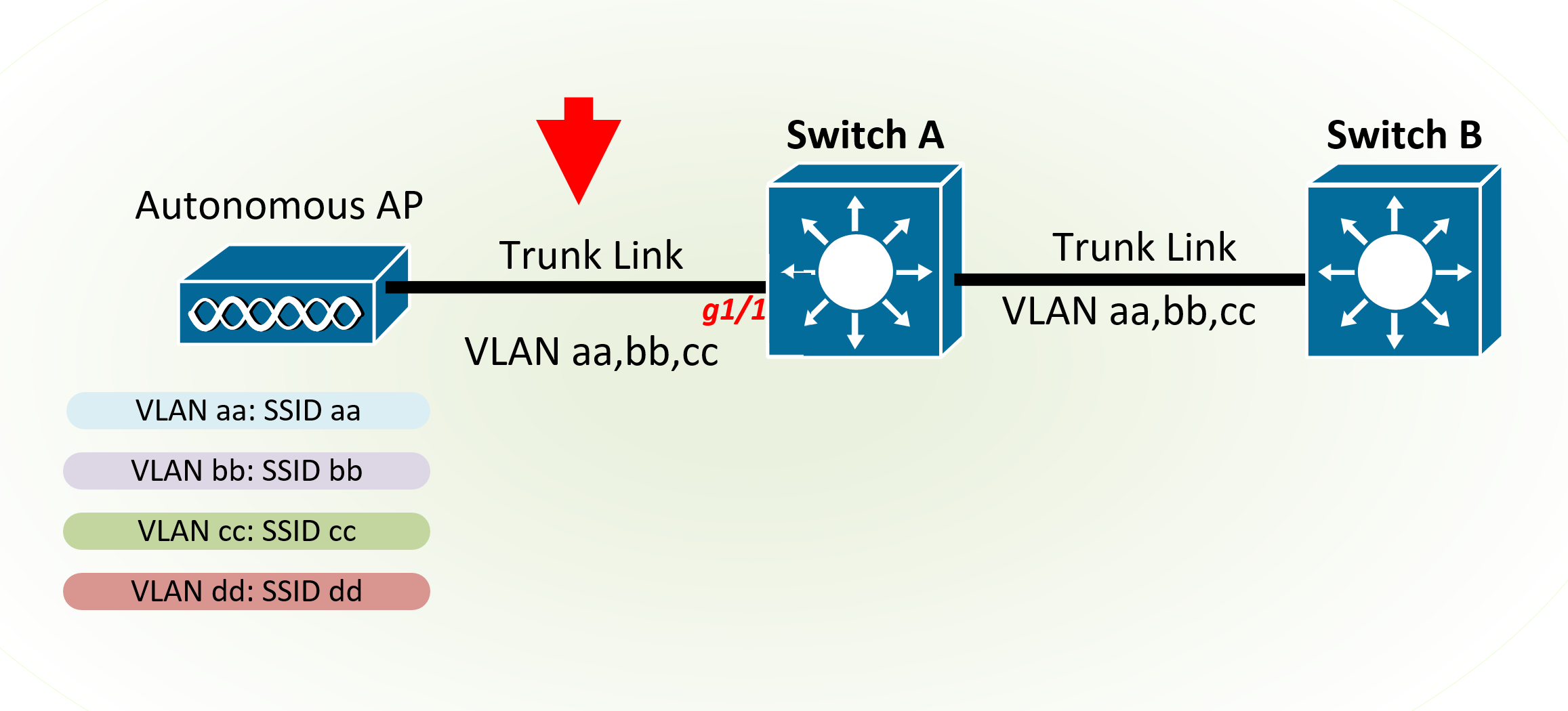
How to configure the interface connecting the Autonomous Wireless Access point to the Wired Network
Specific VLANS are designed and tied to SSID’s on this sort of setup so that the Access Point does not have the need for a Wireless Controller on the network. To get these SSID’s to connect devices to the network, you will need to configure the interconnecting interface or link to the switch as a Trunk or Tagged port. Please follow the configuration below. As you can see from Figure 3.1 above, interface G1/1 connects the AP to the Wired Network or Wired Switch. This interface need to be made into a trunk or tagged port so vlan traffic from the Access Point can speak on the network.
Configuration – Configure the interface connecting the Autonomous Wireless Access point to the Wired Network
#interface gigabitethernet 1/1 #switchport #switchport trunk encapsulation dot1q #switchport trunk allowed vlans 70,80,90 #switchport mode trunk #no shutdown
How to configure the interface connecting the Lightweight Access point to the Wired Network
The Lightweight Access Point LAP depends completely on the Wireless Controller for configuration information to get it perform its task as an extension to the wired network. It therefore does not need to connect as a trunk port to the Wired Switch Network but as a normal Access Switch-port otherwise known as Untagged in other vendor circles. Please follow the configuration below in order to connect a wireless access point to a wired network.
Configuration – Configure the interface connecting the Lightweight Access point to the Wired Network
#interface gigabitethernet 1/1 #switchport #switchport access vlan 100 #switchport mode access #no shutdown
So here you have it, a rather informative post for a simple configuration but like always Expert Network Consultant cares about quality of the information we are giving you. You might want to consider reading up our post on Configuring Guest Wireless with VLANS.
